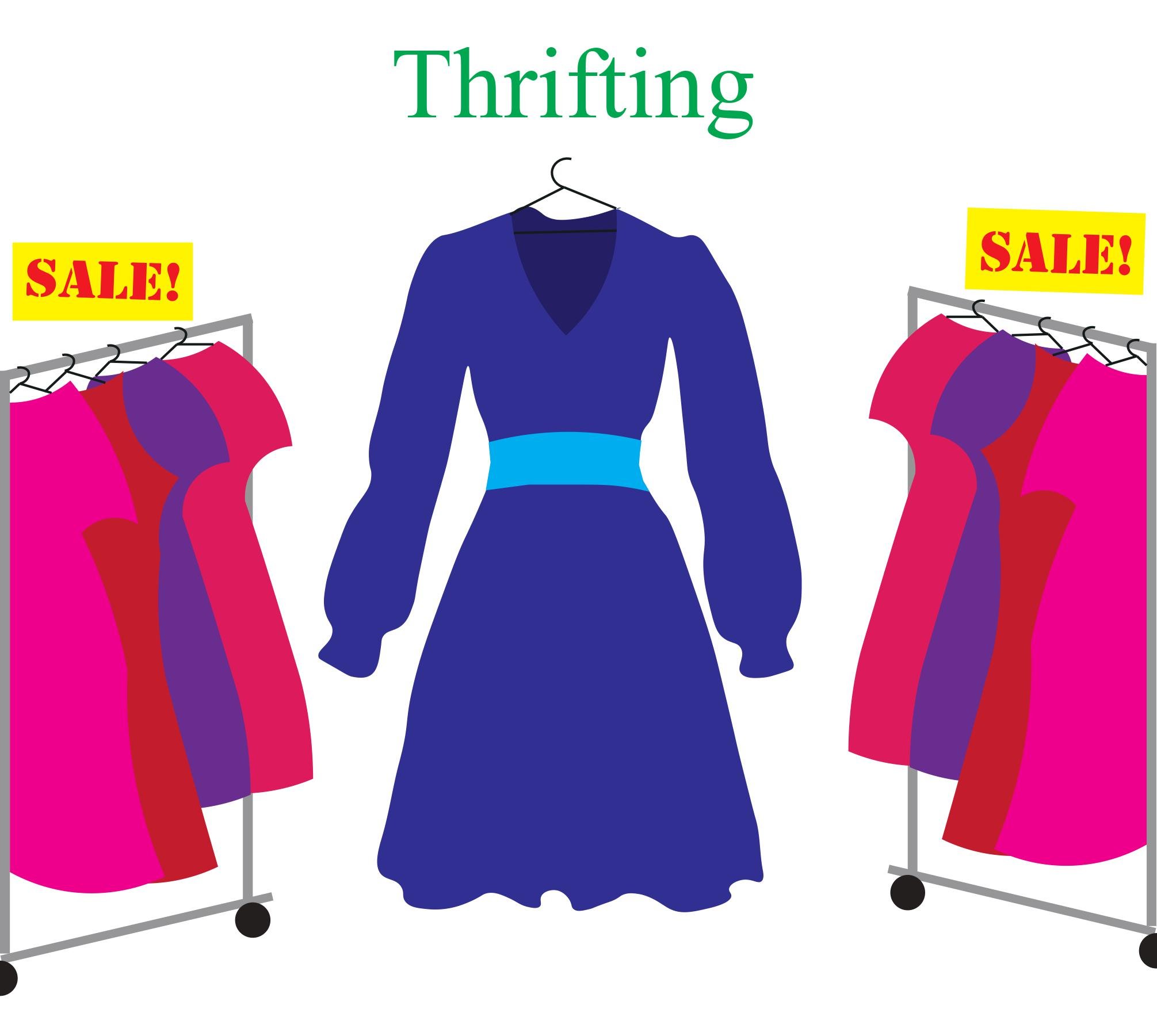Thrifting
The idea of thrifting and its history.
Graphic by Ria Dubey, Opinions Editor
Elizabeth Leffew, Staff Writer
Thrifting is the act of finding and buying used items from secondhand stores. These stores are key to those looking for products at low prices and fair quality. People can thrift items from many places, such as garage sales, thrift stores, flea markets, estate sales, antique stores, and secondhand shops, including Goodwill and The Salvation Army.
For many people, thrifting is a rare event in which they are trying to find one specific item, such as a minifridge, at a low price. For others, it is a fun event during which they can hang out with friends while finding unexpected items. Though many may feel that used items are not of good quality, those that choose to venture into the unknown can discover hidden treasures and some unusual gems. Thrifting also gives individuals the ability to be creative and think outside the box by customizing or rebuilding their secondhand finds.
“Going onto Pinterest and looking for ideas of clothing that you like or dislike, and knowing what you want, are the basics at thrift stores,” junior Shadi Karimifard said.
Thrifting was almost nonexistent until the 1830s when the Industrial Revolution introduced the mass production of clothing. As clothing became more affordable, people began to view clothing as disposable. As the U.S. population grew, home space shrank, resulting in the disposal of personal possessions in record numbers. As a result, the creation of secondhand stores, like pawnshops, became more prevalent as a way to handle used and unwanted items. Currently, there are over 25,000 thrifting stores in the U.S., with over 500 in Georgia.
“It began as something looked down upon but began getting more popular around the 1990s and has since gotten more popular,” senior Coral Brito said. “I mean, look at our generation.”
As thrifting becomes more popular, major businesses, such as Adidas, Gucci, and IKEA, will find a larger share of their past products in thrift stores. While this may cause these companies to lose minor revenue, thrifting ultimately helps the environment by promoting recycling and reuse by individuals that may not have had the chance to buy them at current sale prices. Thrifting also gives people the opportunity to give back to their community. By shopping at a secondhand business, customers are helping to provide no-cost career services by buying goods at affordable prices.
“I thrift because it is a lot more affordable and it is more interesting than going to Forever 21 or H&M where you know what to expect,” junior Ally Anteau said. “Thrifting is basically a treasure hunt; you never know what you’re going to find. A lot of my closet is thrifted, and I have a lot of really interesting pieces that I haven’t even worn. I just thought they were really cool.”
Thrift shopping is a good way to practice sustainability because it reduces energy consumption, air pollution, landfills, and ocean pollution. There are endless fashion possibilities with thrift shopping in addition to protecting the earth. While everyone has various reasons for choosing to buy secondhand clothes or home goods, all these people can save money, find unique items, and reduce their carbon footprint. Many individuals rely on local thrift stores to find clothing at affordable prices, making these stores an essential part of communities across the nation.
“I think thrifting is good for the environment because you reuse and recycle. There are fewer clothes going to waste, especially with all the fast fashion companies like Cheyenne. You can usually find so many of [these brands] in thrift stores, as opposed to the waste field with old belongings,” Anteau said. “I think it is also good for the economy, especially for people that don’t have a lot of money because clothes are so expensive nowadays. To get a t-shirt, it is like 10 dollars. What the heck? A lot of the clothes, at least at Goodwill, are [priced] way below that. It’s crazy.”


